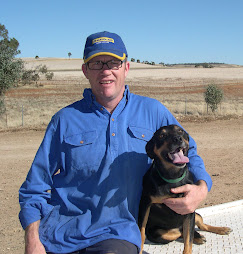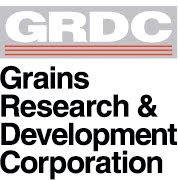Kansas State University or K State is in Manhattan. We caught up with Scott Staggenborg who is the Associate Professor in Agronomy. Scott has been looking at disc seeding system and their use in Kansas. He has been looking at soil parameters and has found there has been an increase in organic matter on average of 0.2 % per year. This gives hope to make a viable increase to help our soil better.
In long term trials and in farmer’s paddocks there is a definite trend in the speed which the stubble is breaking down. This is due to the increase of biological activity in the soil particularly those ravenous piranha like organisms, which are the first stage decomposers. Farmers are now looking at their rotations to have quick decomposed crops alongside those that resist decomposition.
Scott in his work has listed crops from quick decomposition to very slow ones.
Wheat→Barley→Soyabeans→Sorghum→Corn .
The corn still have leafs that break down relatively quickly, but the stalks and kernels last a lot longer. Now that corn has been engineered with the BT gene (Bacillus Thiregenisis) the corn stubble is taking an even longer time to decompose. All of this information is used by farmers to maintain enough stubble cover on their paddocks.
Asking Scott about the yield achieved by the farmers and their stubble loads; we had to convert everything from bushels per acre to tonnes per hectare. For wheat they achieve around 3.5-3.7 t/ha with a harvest index of 0.4: 1 and therefore get a stubble cover of 9 t/ha.
One area of interest is the role that our pesticides are having on the colonies of macro and micro-organisms in the soil particularly the soil fungi. We are currently using a fungicide treated fertilizer for our wheat production. This practice is very detrimental to those good fungal strains such as Arbuscular Myccorhizal Fungi (AMF) according to Scott. He stated that it would be better to only coat the seed and therefore only affect those that come in contact with the seed and plant. The fertilizer type creates more of a dead zone. *More Info Needed*
An area that he and Charles Rice are working on is to quantify the benefits of Carbon is having by keeping it in the system (sequestration) not only for a minor payment in the green payments, but the value it gives to the soil and the crops grown upon it. I think these guys would be good for Alistair to visit.
Professor Charles Rice - University Distinguished Professor Kansas State University.
Charles is working on carbon and nitrogen cycling and looking at the soil fertility of long term trials with various rotations which includes treatments of manures and different nitrogenous fertilisers. The system which had the best increase in fertility was the rotation that had corn and manures. The second best was the rotation which contained corn and nitrogen fertiliser in the form of 32:0:0. During these trials the water holding capacity increased but was only a gradual process with small incremental improvements. The increased water availability came from having stubble retained which had the effect of lowering of evaporation.
Other work Charles has conducted was looking at the difference between standing stubble versus stubble laying flat on the ground. The standing stubble was useful to help catch snow and was easier to sow through. The laying stubble had more effect in lowering evaporation but allowed for snow to be blown across the paddocks and not trapped to allow for melting for future plant use. The laying stubble had the effect of keeping the soil cool which at the start of the prairie season slowed germination and emergence. Charles thought that this would be beneficial for us in Australia as the full stubble cover would keep some of the temperatures noticeably lower and this would mean that microbial activity would continue through our hot summers.
We had an interesting discussion regarding some recent findings in trials where Glyphosate is building up in some soils and causing problems with some micro organisms.
03 June, 2010
Subscribe to:
Post Comments (Atom)





No comments:
Post a Comment